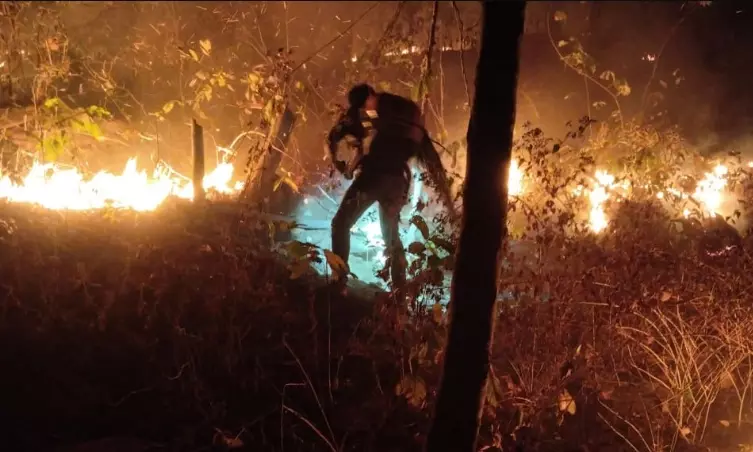Odisha Sees Surge in Forest Fires Amid Rising Heat
Prolonged blazes have hampered the efforts of forest officials, allowing fires to spread unchecked, destroying vast stretches of trees and vegetation, and disrupting the ecological balance.;

Bhubaneswar: With summer advancing, Odisha is witnessing a sharp rise in forest fires, raising serious concerns. The Forest Survey of India (FSI) has detected 2,586 fire points in various forests across the state in the past seven days.
The affected districts include Malkangiri, Nabarangpur, Koraput, Nuapada, Kalahandi, Bargarh, Bolangir, Rayagada, Kandhamal, Sundargarh, Boudh, Subarnapur, Jharsuguda, Sambalpur, Gajapati, Ganjam, Deogarh, Angul, Cuttack, Nayagarh, Keonjhar, Mayurbhanj, Dhenkanal, and Jajpur.
Prolonged blazes have hampered the efforts of forest officials, allowing fires to spread unchecked, destroying vast stretches of trees and vegetation, and disrupting the ecological balance. The surge is alarming, considering that between February 25 and March 4, 1,172 fire points were detected, showing a significant rise in just a week.
Forest fires are recorded when satellite sensors MODIS or SNPP-VIIRS detect hotspots in India’s forest areas. Rising temperatures and dry weather have exacerbated conditions, with 46 per cent of the 1,956 fire points in 2025 occurring within a single week in February. The FSI also reported 11 large active fires in Koraput circle by mid-February, worsened by early leaf shedding in southern Odisha’s forests.
Approximately 27.97 per cent of Odisha’s forests—spanning 57,066 square kilometers—are highly fire-prone, particularly deciduous forests. The Koraput circle remains most vulnerable due to its dry tropical forests and human activities.
Anthropogenic factors are a major driver of these fires, including slash-and-burn agriculture and the collection of Mahua flowers, which involves burning dry leaves. Land clearing, especially in Keonjhar’s tribal belts, has also contributed significantly. More than 1,100 fire points detected in 2025 originated outside formal forest areas, indicating an urgent need for fire prevention measures.

